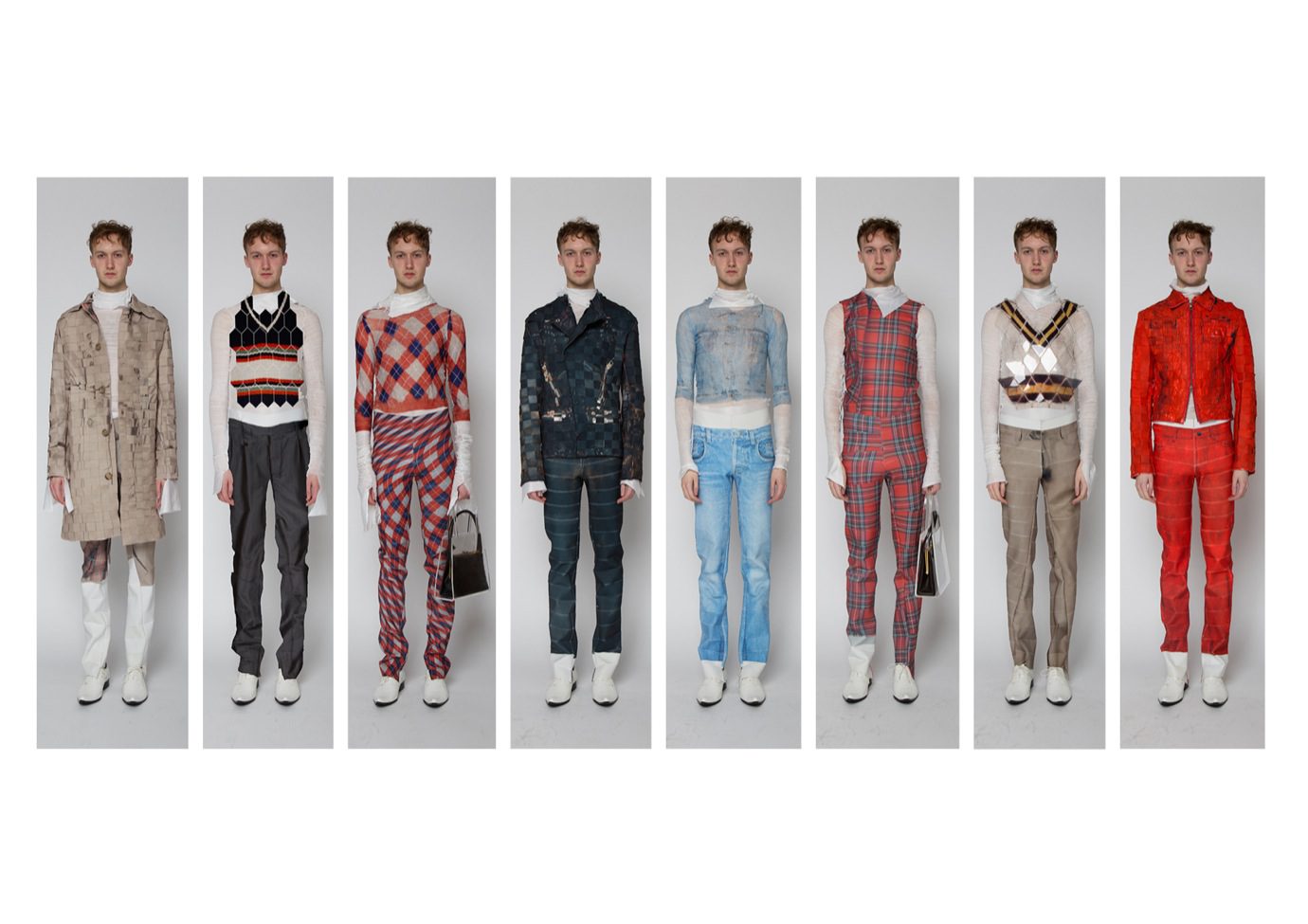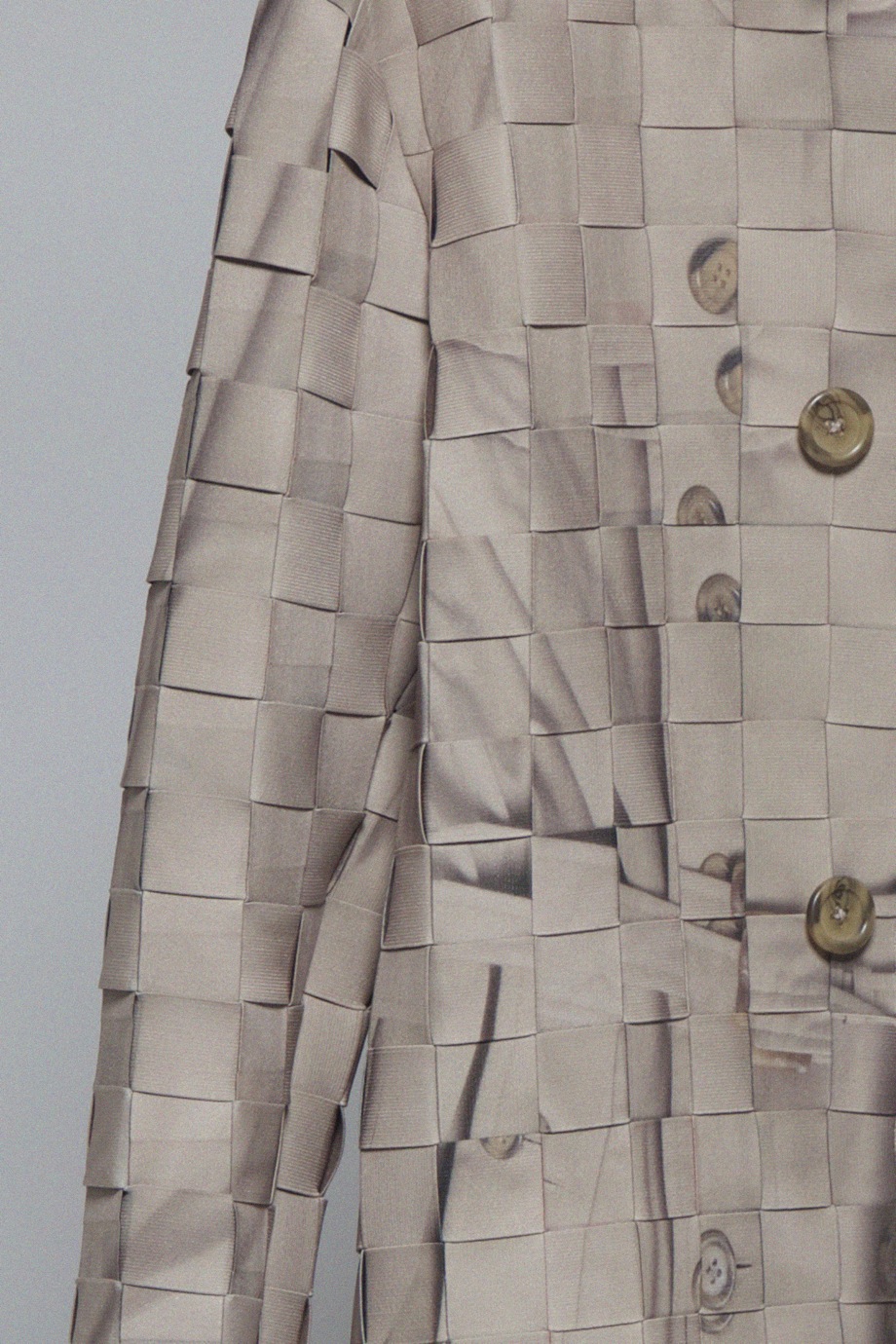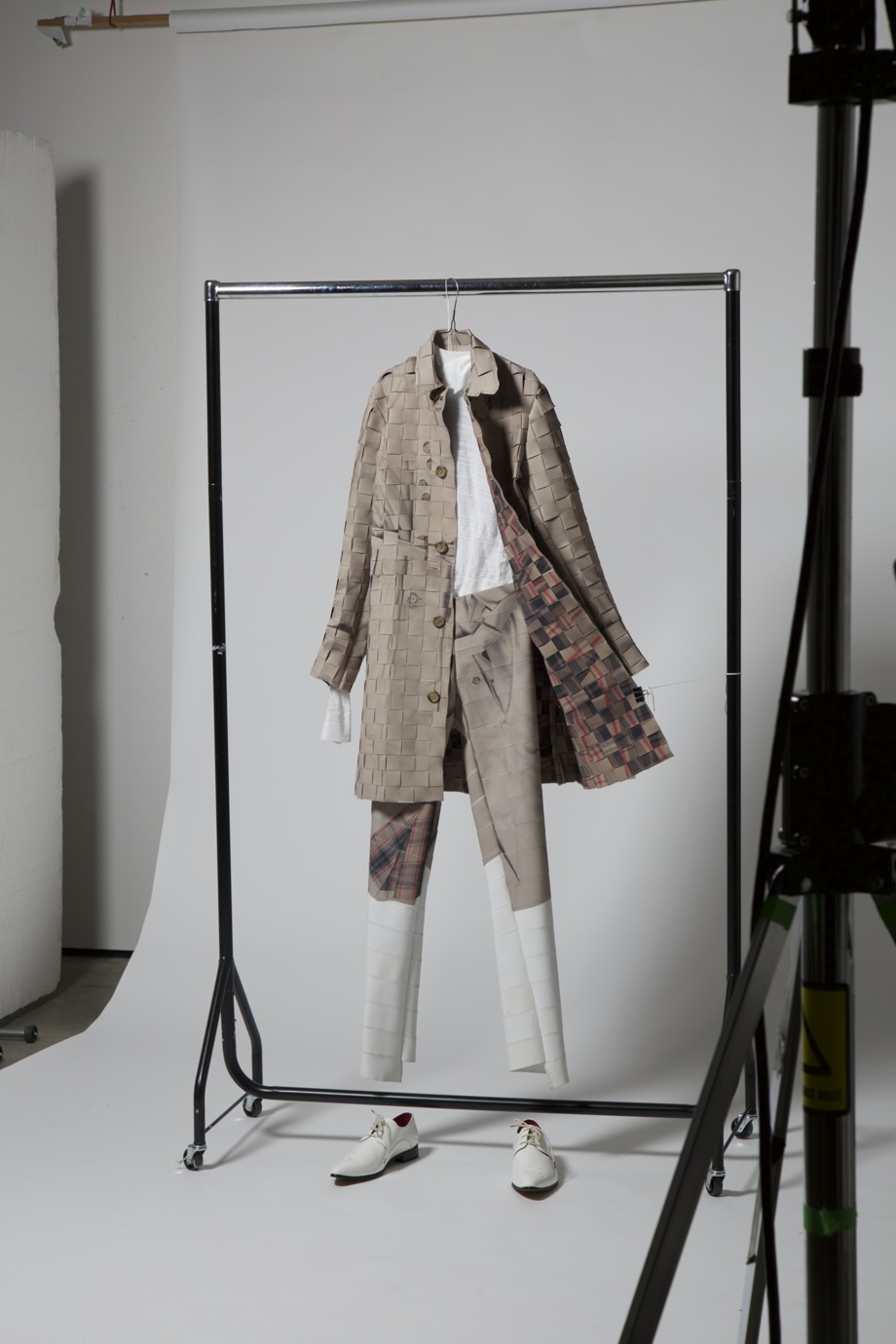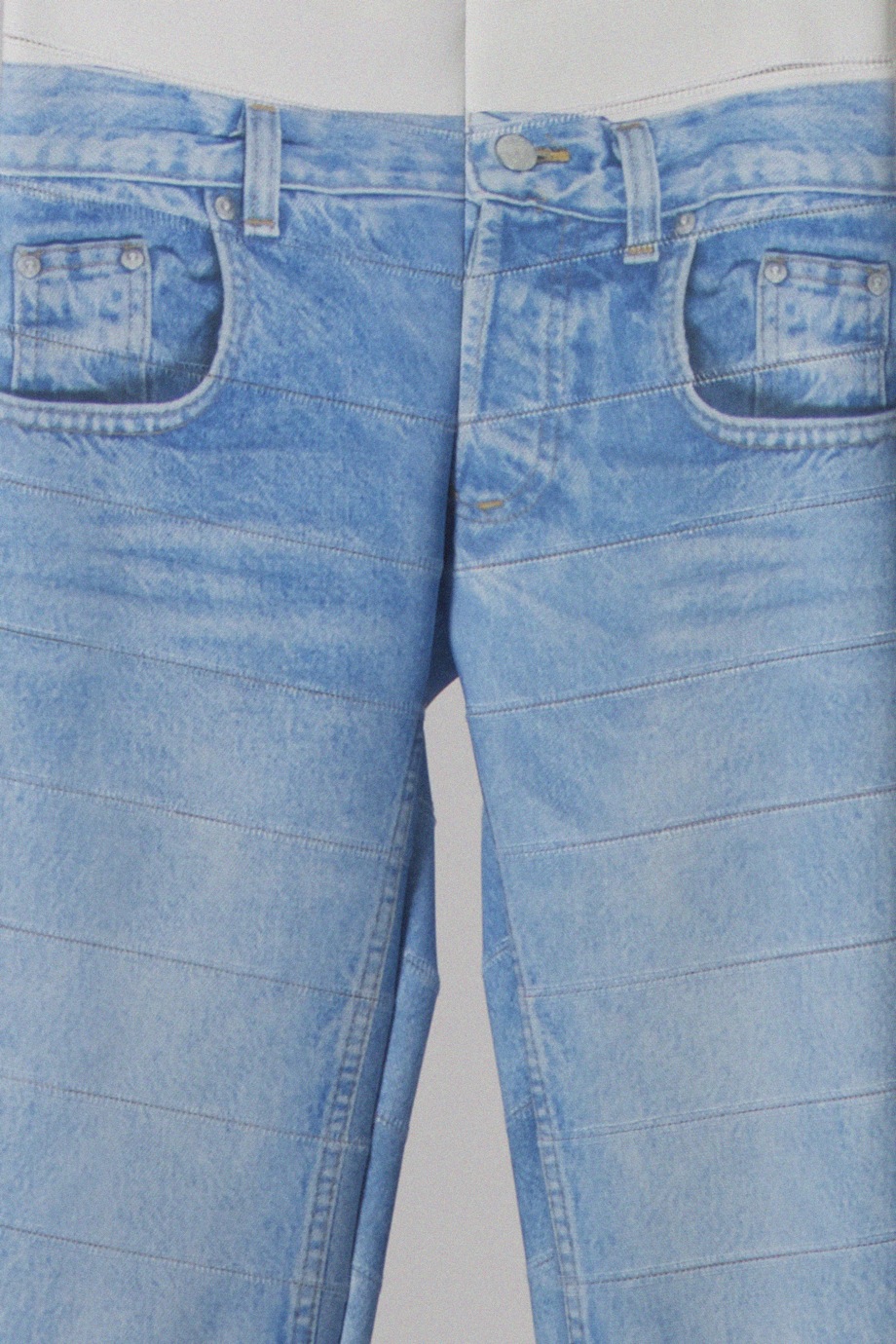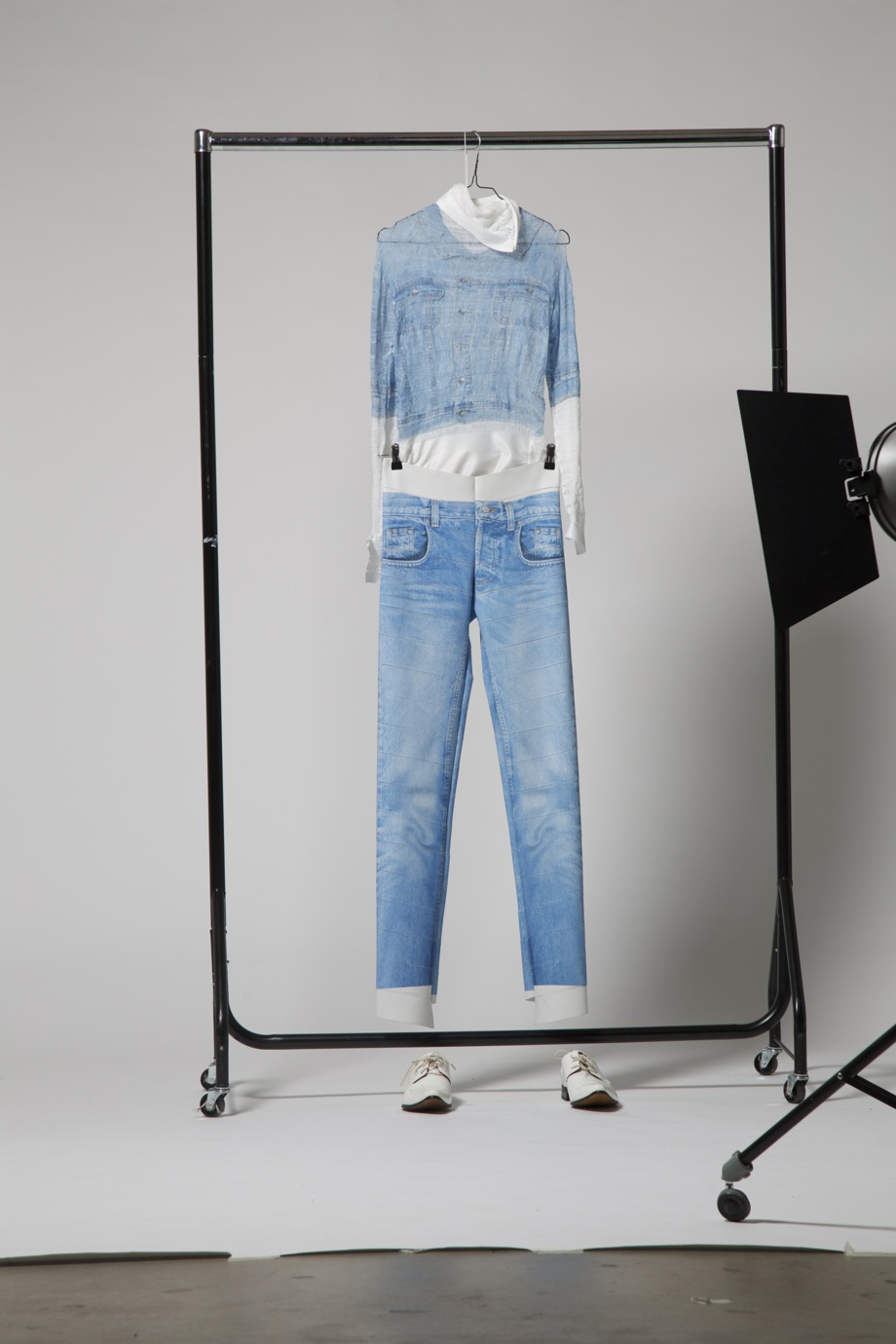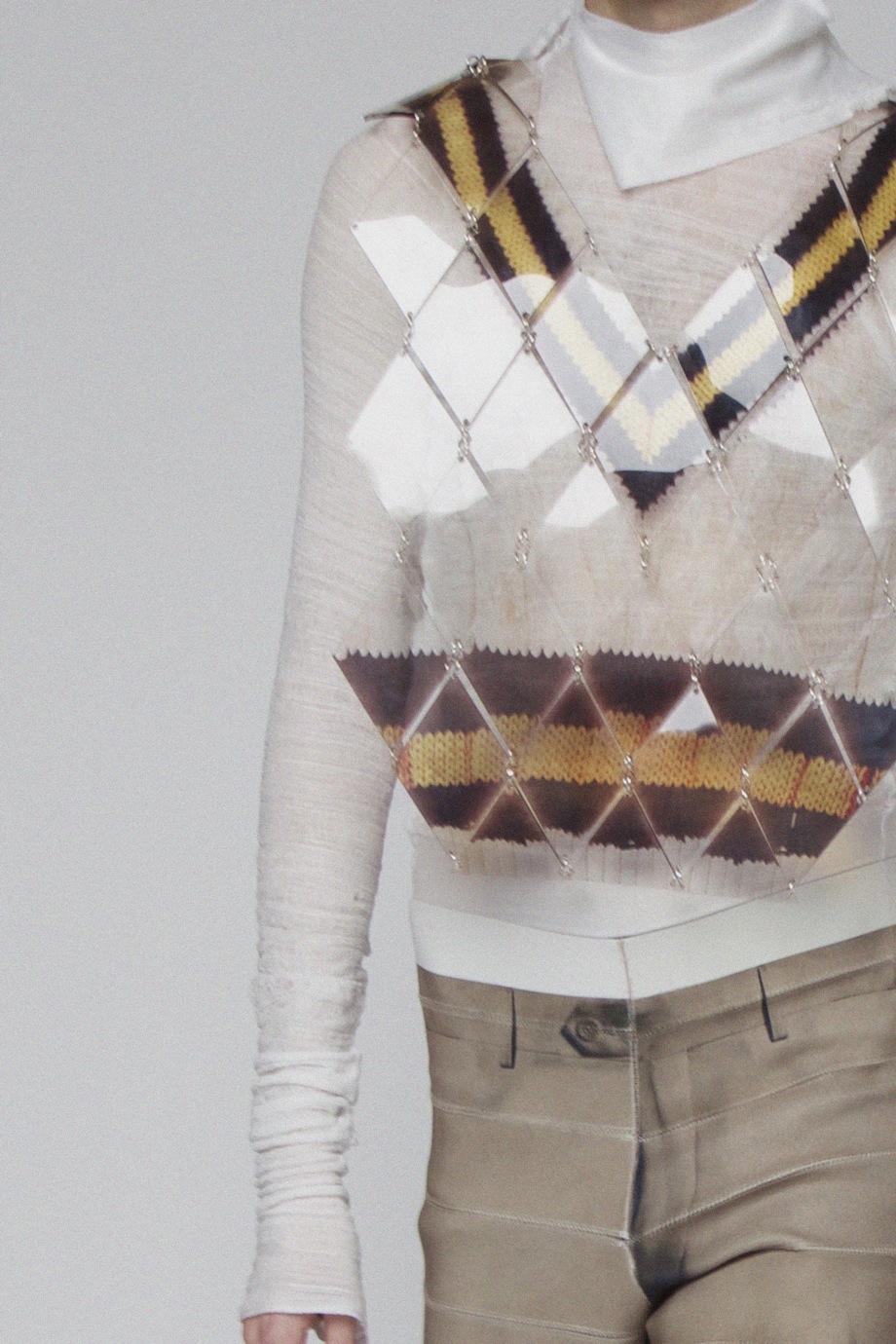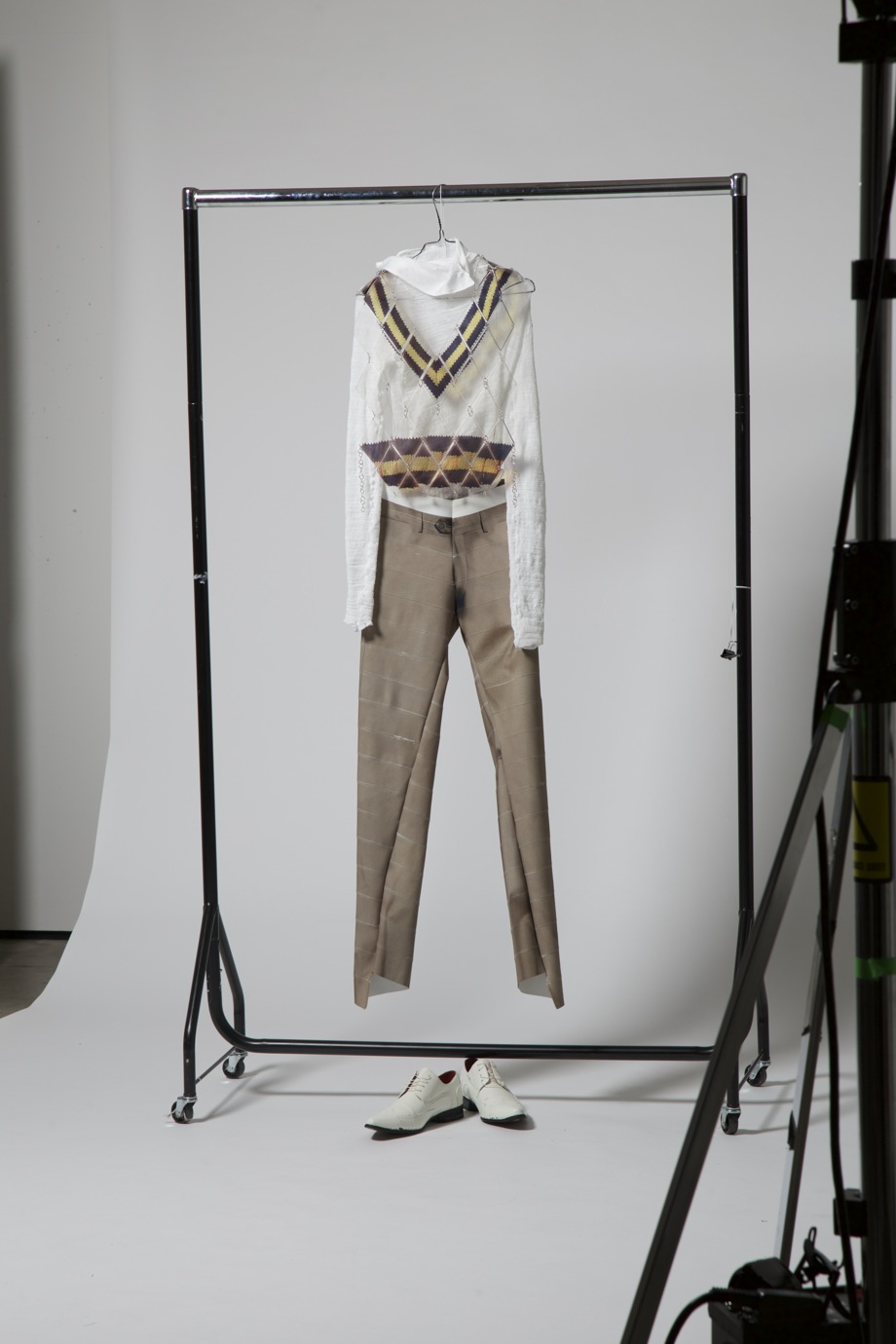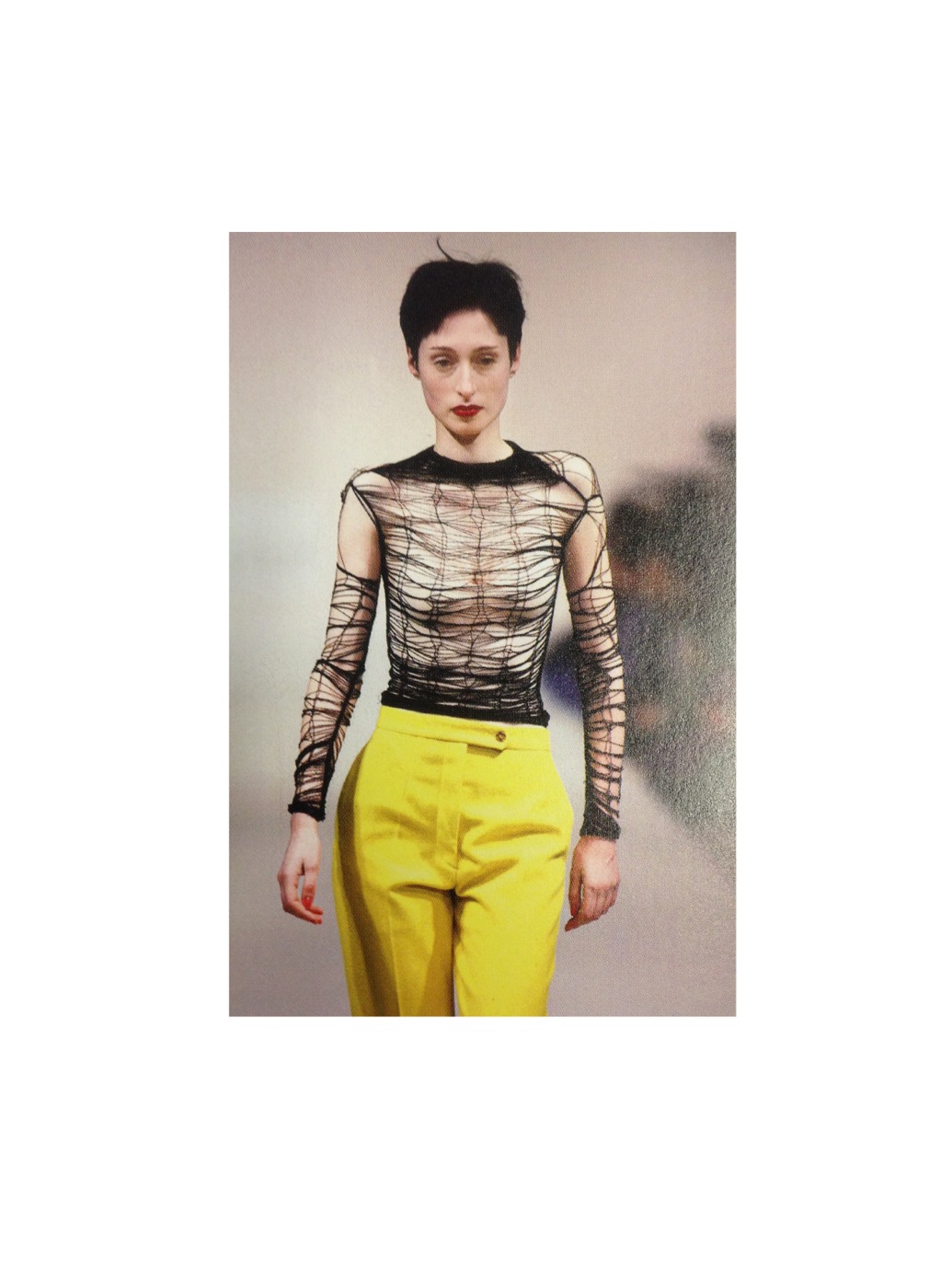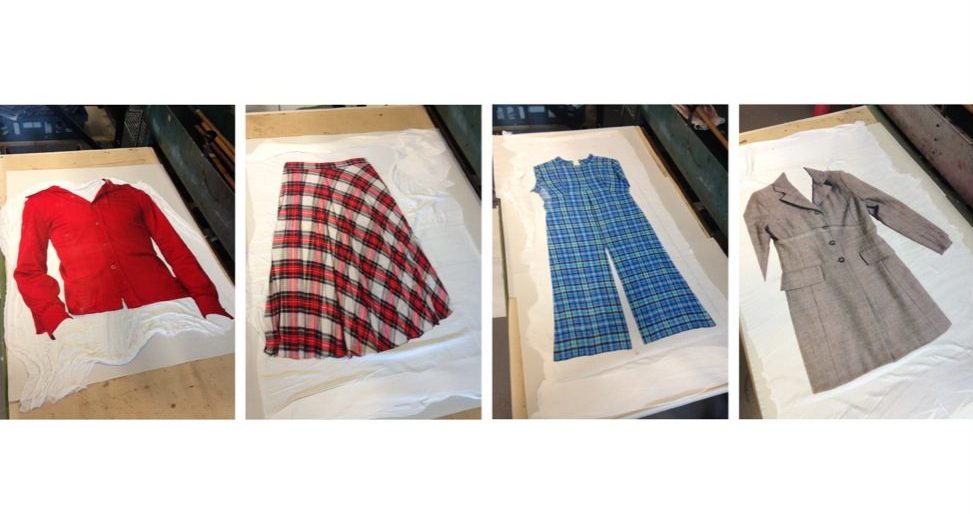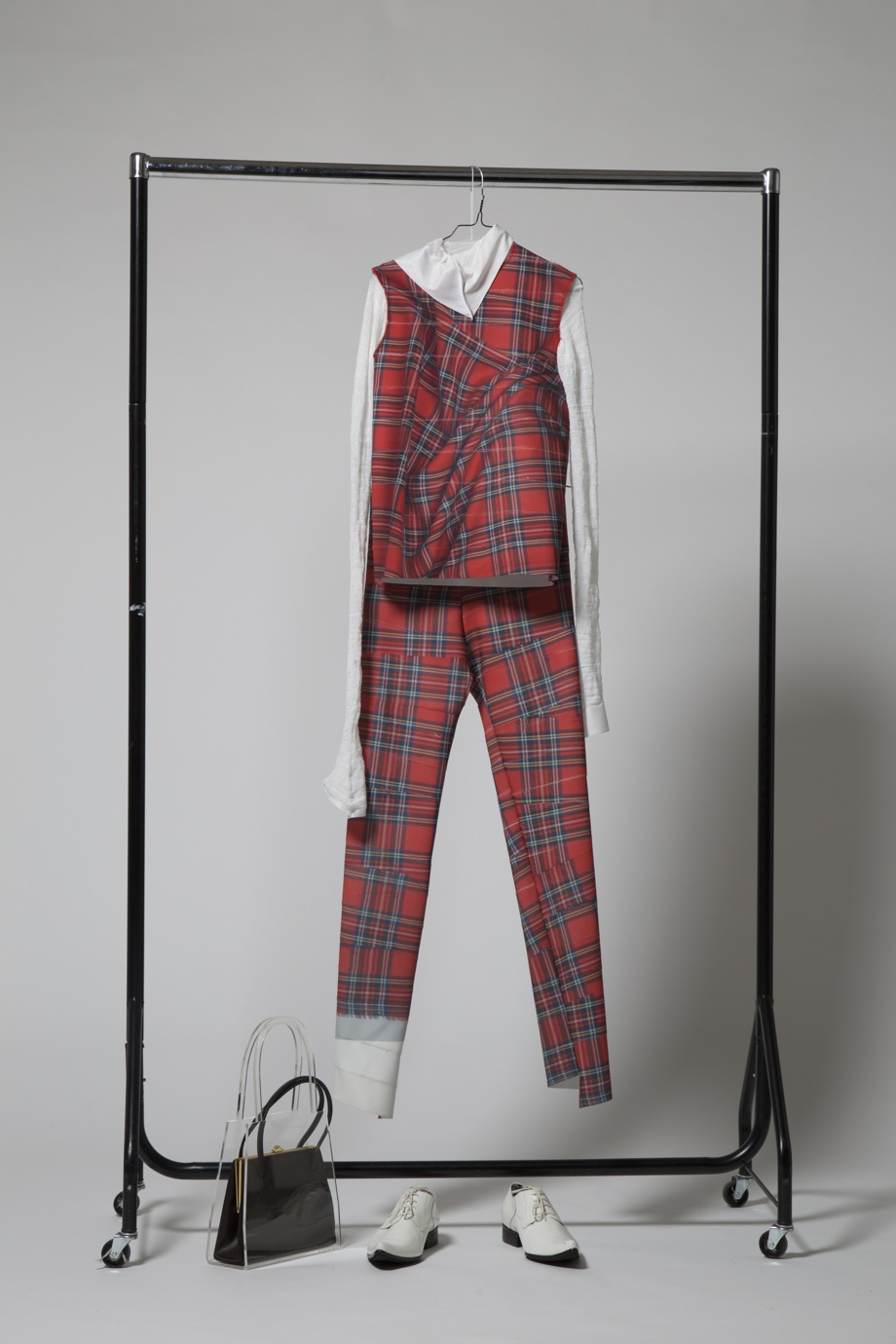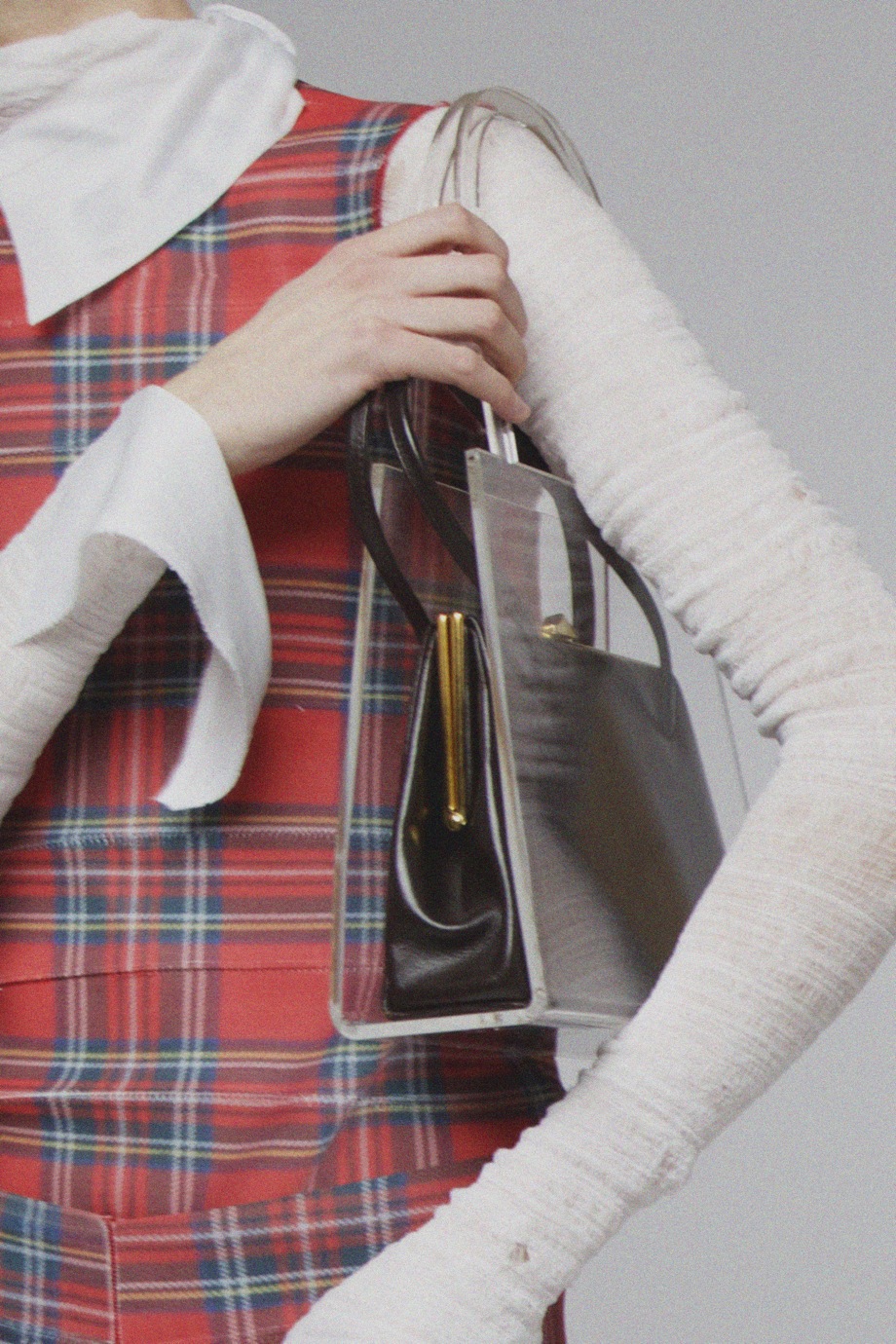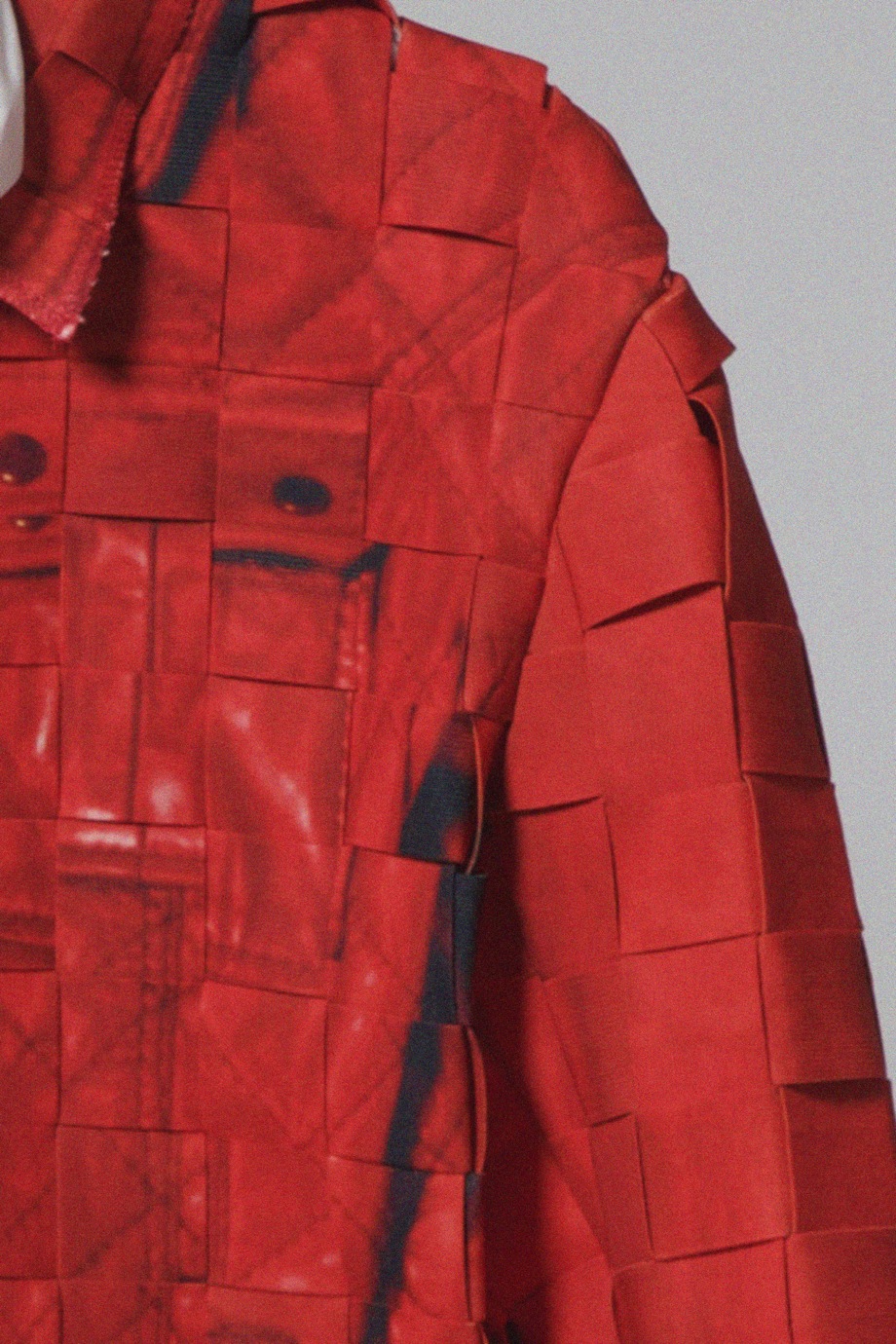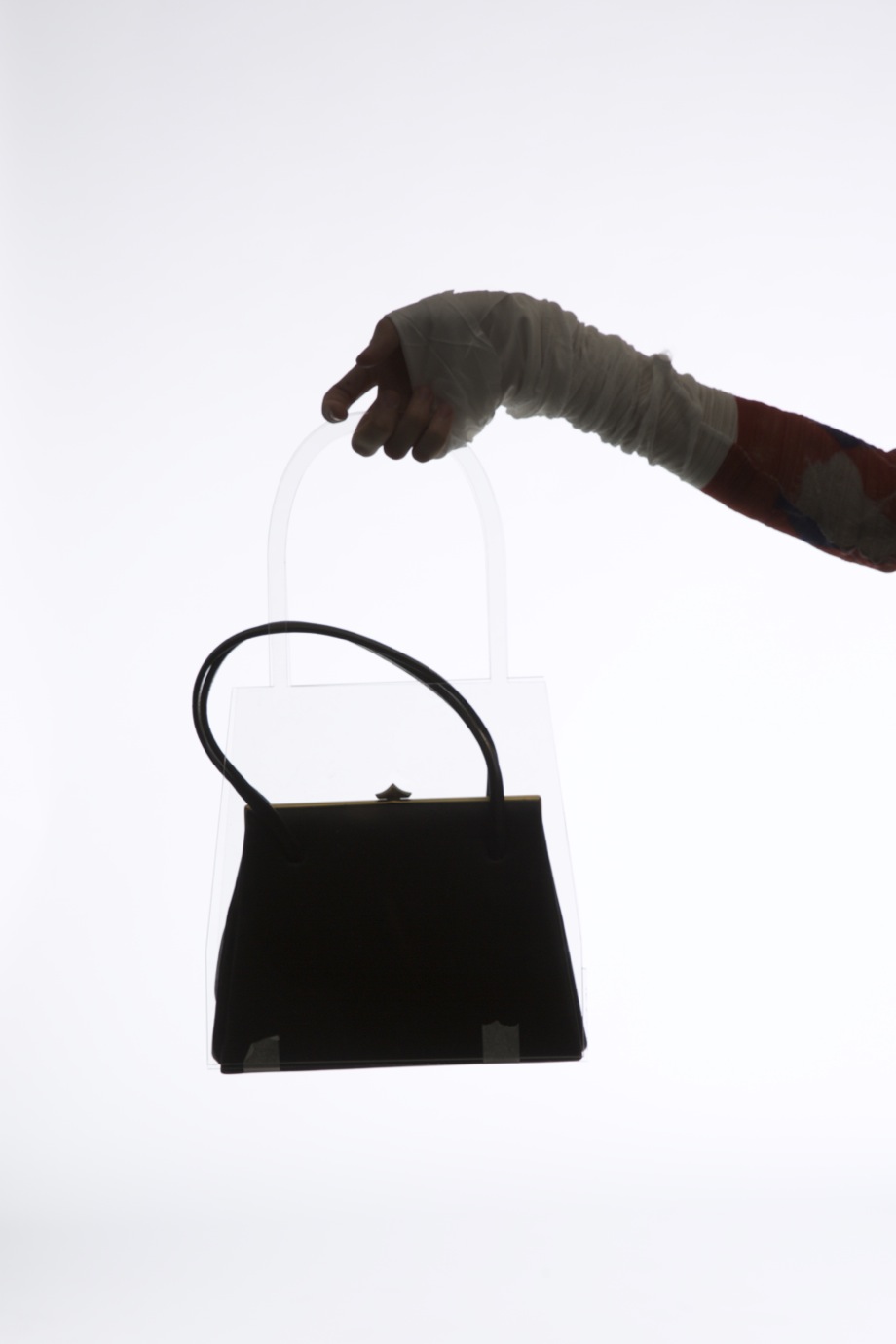The uncanny is that subjective sensation triggered by something which is at once familiar yet alien. It is the unsettling evocation of the past in the present. Stefan Cooke’s MA collection is a manifestation of that feeling. “I think it is easy to forget that clothes are made for the body, they are to be experienced with the senses, worn and used,” he states. “As soon as you change one aspect, say something like the material, it creates an entirely different sensation… I wanted to create something quite dark and weird, that you can interpret in any way you want to.”
It was only just over a week ago that the textiles designer was awarded the L’Oréal Professional Creative Award alongside Gabriele Skucas at the Central Saint Martins MA Fashion show, following in the footsteps of designers like Ashish, Jonathan Saunders and Matty Bovan.
Often misinterpreted as a commentary on British culture, Cooke’s graduate collection simply took inspiration from normal everyday items of clothing, pieces that you’d find gathering dust in an average male wardrobe or for sale in any charity shop. “I chose clothes which have been reproduced so many times that there is no design in them anymore.” Cooke explains he wanted to reinterpret, revitalise and elevate these mundane items of clothing into pieces that would not seem out of place either on a catwalk or in the context of an art gallery or museum.
Assisted by his team, Cooke subverted these pieces of clothing by replicating them in unusual ways. Several garments, including a pair of jeans, a leather jacket, a trench coat and a cricket jumper, were collected, photographed and digitally manipulated by Cooke, then transposed by means of digital and sublimation printing onto synthetic materials. The long-sleeved tops are shredded polyester, the chainmail-like jumpers are made of plastic, and elastic is woven together to create the jackets and the coat. The bandage-like bodycon trousers are also constructed from elastic, coverstitched together. Glimpses of the body are revealed through the distressed polyester or beneath the coverstitching; the body provides the silhouette as even the woven pieces fit intuitively.
“I CHOSE CLOTHES WHICH HAVE BEEN REPRODUCED SO MANY TIMES THAT THERE IS NO DESIGN IN THEM ANYMORE.”

